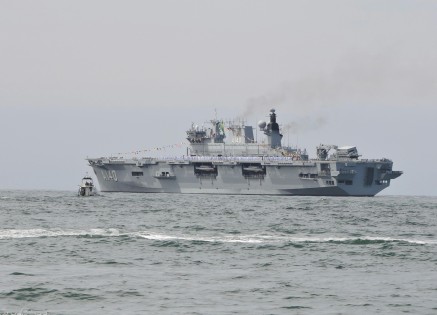Copyright © 2025 lmitac.com All Rights Reserved. Contact - Terms and Conditions - Privacy Policy - Quality Policy - Become an instructor - Vacancies - Sitemap
London Maritime Academy is a trade name for London Premier Groupversion: 2.9.0
London Maritime Academy is a trade name for London Premier Group

Posted on : 5/27/2025, 7:00:20 AM
With all the development and advancement in the maritime industry, the risks still exist in ports, maritime facilities, and high seas, thus, applying the approved ship security assessment by the ISPS is a must.
Moreover, the ship security assessment (SSA) must cover the vessel crew, passengers, engines, equipment, cargoes, and all other details to guarantee the effective security and safety of ships from port to port.
In this article, we will share unique details about the ship security assessment, while revealing its importance, and exploring the main and key required elements to establish a strong and stable ship security plan.
The ISPS Code Ship Security Assessment (SSA) is a critical process that must be applied to all ships and vessels at sea and port, with regular developing and updating steps to the operation.
Usually, the SSA framework development and implementation is done by the Company Security Officer (CSO), or officers based on specified security measures and assessments to determine and evaluate security threats and vulnerabilities while shipping.
Whether the completed SSA plan was developed by an independent security company or on-board existing security officer. The ship security assessment must consider and oversee ship-specific identification factors like layout, previous incidents, written data contents, devices, and designed operations.
Additionally, the ship security assessment (SSA) is considered not only one of the stringent criteria, but also the foundation of a comprehensive Ship Security Plan (SSP) based on IMO regulations and guidelines.
Implementing the ship security assessment (SSA) is not only important to follow international security guidance, but also helps maritime companies and operators identify potential threats and weak points in ship's security plans at each management level.
Furthermore, the ship security assessment ensures that all risks are evaluated before creating a Ship Security Plan, making the ship better prepared against accidents or attacks.
Let us explain this subject in other words, the ship security assessment includes and conducts a proactive security plan for each possible event rather than reactive responses to protect the ship, crew, carried cargo, and marine environment based on the integral ISPS Security Code.

As we mentioned earlier, the valid ship security assessment is a key pillar in the ISPS code, thus, to prepare all its needed elements, you need to attend the ISPS Code Course in London to be ready with an accredited certification:
The first step in the vessel security assessment should be identifying possible threats and weak areas on the ship. Including the inspection of all process requirements, measures, and risks to set efficient security measures based on professional analysis of ships and their requirements.
Although each company needs to ensure its crew members are trained, equipped, and prepared to respond to security incidents, even during high-risk situations, to make sure that the highest security standards are applied in all operations.
Moreover, the ship security assessment must include a plan for passengers' safety on the vessel during the whole voyage, even for companies with large numbers of ships.
With all the technical developments and used technologies, the ship security assessment needs a well-established and regularly updated cybersecurity plan that covers all possible digital threats, communication, and navigation systems.
This security plan should go further than reacting to threats, with a proactive plan that prevents and detects attacks before leading to any losses in the systems of ships.
Review and establish a clear physical access plan with points and access levels on the vessel, even if you have a small maritime company, to guarantee restricted areas are secure and unauthorized entry is prevented on the vessel.
Being ready and prepared is a key benefit of establishing a professional ship security assessment (SSA), therefore, it is a key element to outline required actions to reduce or eliminate identified threats with clear emergency procedures for each situation on the vessel.
The ship security assessment (SSA) should be a priority for any maritime company, especially since it protects the vessel itself from sea and ocean hazards.
Make sure to understand and implement the ISPS Code with all its aspects to protect your vessel from port, offshore, and regulatory threats.
A Ship Security Assessment (SSA) is a mandatory process under the ISPS Code that identifies vulnerabilities, threats, and security needs of a vessel. It evaluates systems, crew readiness, equipment, layout, and historical incidents to prepare an effective Ship Security Plan (SSP) for IMO compliance.
The SSA is the foundation of the Ship Security Plan, ensuring proactive security measures instead of reactive responses. It helps maritime operators detect weak points in crew readiness, digital systems, and physical access, minimizing threats before they become incidents.
Typically, the Company Security Officer (CSO) oversees the SSA, but it can also be conducted by a certified third-party security provider. All assessments must align with IMO and ISPS Code guidelines.
Key components include:
Yes. Given the rise in digital threats, a complete SSA must include cyber risk assessment for communication, navigation, and ship control systems. Proactive detection, firewall setup, and crew cyber awareness training are essential parts of compliance today.
The SSA should be reviewed regularly—especially after significant incidents, security breaches, or operational changes. Most maritime authorities recommend reassessment at least once every 5 years or before renewing the SSP.
Even smaller companies benefit by:
Yes. Under the International Ship and Port Facility Security (ISPS) Code, all commercial ships over 500 GT on international voyages must conduct an SSA and implement a compliant SSP. Port facilities also require similar assessments.
Non-compliance can result in: